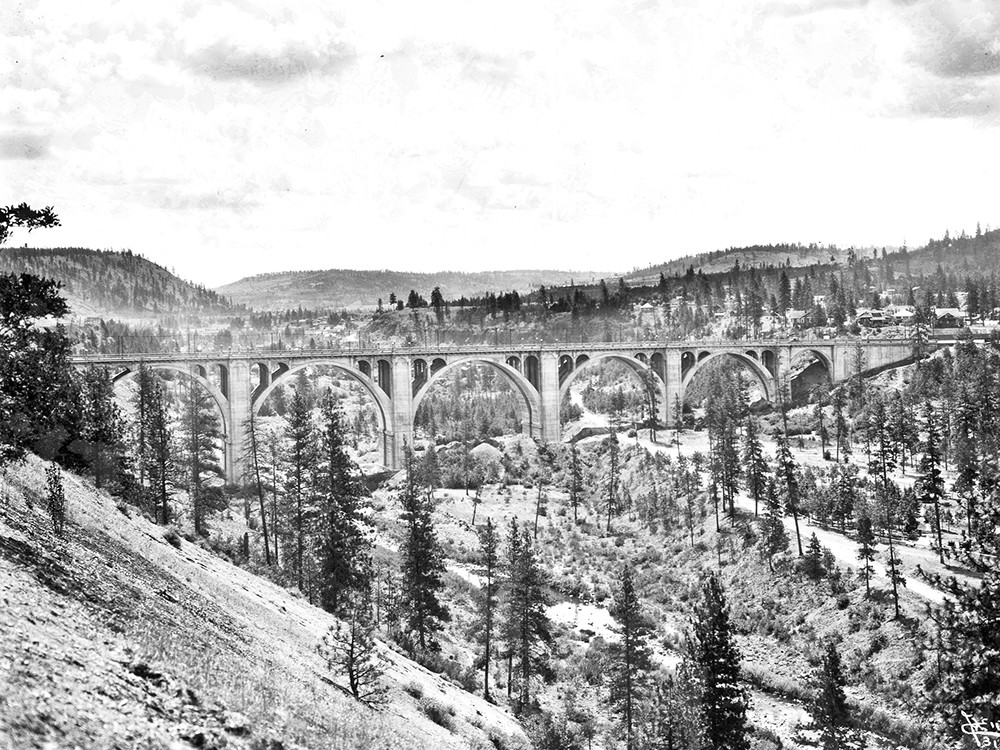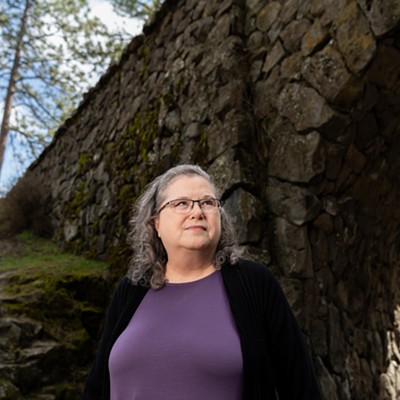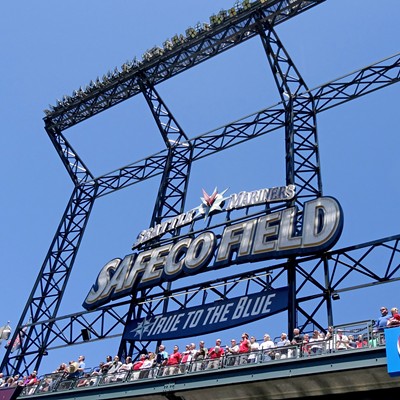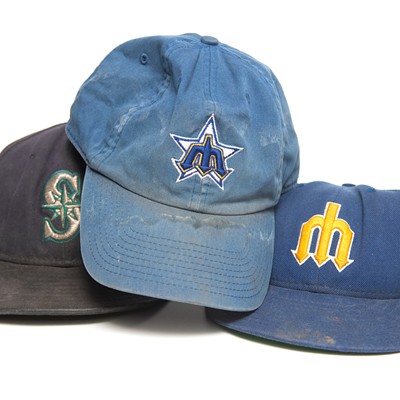Here’s the thing about Spokane — a river flows through the middle of it. Almost the exact middle. At times, that river is a roaring beast of a waterway that must have been as intimidating to the city’s earliest settlers as it remains to us on an early spring day. But thankfully, we have bridges. And without bridges, it’s difficult to imagine Spokane growing up to be anything close to its current size.
In many ways, Spokane’s early history, especially some of its most formidable periods, can be told through the stories of the bridges that cross the mighty Spokane River. That is precisely what author Jeff Creighton, a former assistant archivist for the Washington State Archives’ eastern region, does with his aptly titled book, Bridges of Spokane. Released this week by Arcadia Publishing, Creighton’s book uses photos, many taken by the Spokane City Works department, that he dug up in the late 1990s and began processing for the state archives.
Featuring images of the unsightly wooden and steel predecessors to the concrete roadways we now unappreciatively cross on a daily basis, the book gives us a glimpse into a Spokane that used electric street cars as primary transportation. Most impactful, though, is to see the amount of building that happened in the first decade of the 1900s, a time when the city was benefiting from the mining and timber industries.
“Those were the big years of boom in Spokane —1900 until about 1915 — the infrastructure that was built was phenomenal,” says Creighton.
In 1911, the first Monroe Street Bridge was completed, replacing the rickety expanse of steel that previously connected the two river banks and was in use for less than 20 years. It was one of the largest bridges in the world at the time, its creators touted. Some even said it was the biggest bridge in the world, but Creighton says that claim was almost impossible to verify. Impressively, less than two years later, another massive creation, the Hangman Creek Bridge, with its twin 150-foot arches and 940 feet of total length, was open for use.
The pace and scale of the construction was mind-blowing during this time, but it’s strikingly apparent when flipping through the pages of Bridges of Spokane that aesthetics took a backseat to practicality when it came to building bridges.
Early sketches, Creighton writes, make mentions of gargoyles and statues, but little if any bells or whistles made the final designs in those days.
“When these bridges came up for discussion, a lot of it was just money. They thought it was frivolous to have anything ornamental on these bridges,” says Creighton.
While Bridges of Spokane will likely spark some hometown pride in lifelong Spokanites who remember the alterations of downtown bridges in the ramp up to Expo ’74 or the Monroe Street Bridge renovation of last decade, this history isn’t without its dark parts. Creighton recalls the Division Street Bridge collapse of 1915 that killed five people and injured another 20. Two years later, the under-construction Post Street Bridge collapsed, killing two and injuring 10 others. The Post Street expanse was later rebuilt and remains in use to this day.
Mostly, though, this book tells us how we came to get across the river and reminds us that to know a city, you must also get to know its bridges.
Bridges of Spokane is on sale at arcadiapublishing.com and local bookstores and other retailers.





















